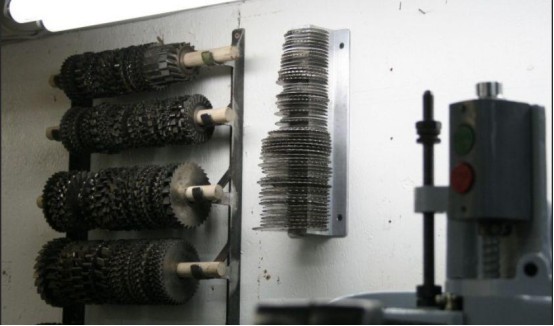NEWS
An Overview of the Manufacturing Process of Woodworking Saw Blades
The production of woodworking saw blades involves a series of precise and technically demanding processes, each designed to ensure high performance, durability, and safety in practical applications.
First, the base material is cut into circular blanks with serrated edges using a laser cutting machine. The thickness of the raw material determines the specific parameters of this process, ensuring dimensional accuracy for subsequent processing steps.
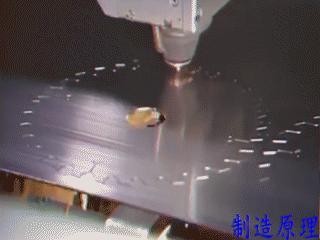
Next, groove pressing is performed by forming annular grooves on both sides of the blade. This step effectively reduces vibration during operation, thereby enhancing cutting stability and ensuring straight, accurate cuts.
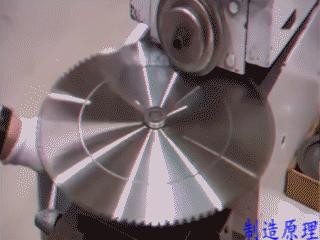
Flatness correction follows, during which the entire saw blade is inspected using precision leveling instruments. Any detected deformation is corrected through mechanical pressing to maintain optimal flatness—critical for consistent cutting performance and tool longevity.
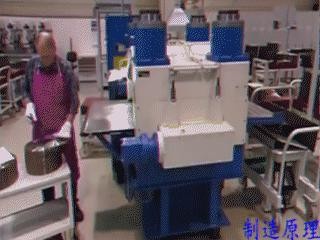
Subsequently, the blades undergo double-sided grinding and polishing to remove burrs, smooth surfaces, and apply surface texturing. This not only improves aesthetic quality but also enhances functional reliability.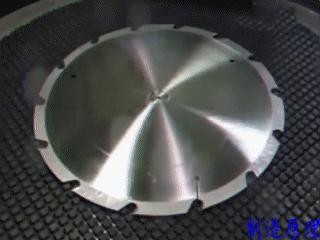
Heat treatment is a critical stage that imparts the desired balance of rigidity and flexibility to the blade, essential for efficient wood cutting. The process involves heating the blade to 840–860 °C, followed by tempering at 390–420 °C. After treatment, the hardness of the blade body typically reaches 40–48 HRC, meeting industrial standards for wear resistance and structural integrity.
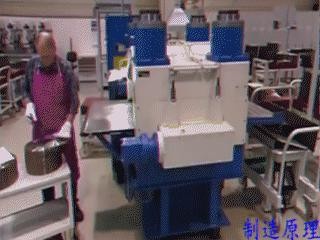
Alloy tooth welding is carried out by brazing hard alloy tips onto the blade body. These alloys, primarily composed of tungsten carbide, exhibit excellent heat and wear resistance, significantly extending service life. The assembly is heated to approximately 700 °C using flux (special copper powder) as a bonding agent.

Post-welding, the blade is tempered at 100 °C in an oven to relieve residual stresses and further improve toughness and durability.

In manual operations, the flux is applied before the hard alloy; automated high-frequency induction welding systems are increasingly used to enhance consistency and productivity.
Following welding, the cutter heads are sharpened through precision grinding. The front face, back face, and side edges of each tooth are ground at specified angles using abrasive wheels to achieve sharp, uniform cutting edges.

Laser engraving is then employed to mark each blade with required information such as brand logos, model numbers, and technical specifications, ensuring traceability and authenticity.

Quality inspection includes multiple stages: flatness verification using precision levels, weld integrity assessment via projection imaging, and dimensional checks of the central bore using plug gauges. These measures guarantee compliance with strict manufacturing tolerances.

In practical use, appropriate saw blades must be selected based on the type of material being processed. Safety protocols are paramount: operators must wear protective eyewear, hearing protection, and appropriate clothing; gloves should not be worn due to entanglement risks. Attention should be paid to sleeve tightness, and operation in enclosed spaces or near ignition sources should be avoided. Additional safeguards include emergency stop mechanisms and overload protection systems.
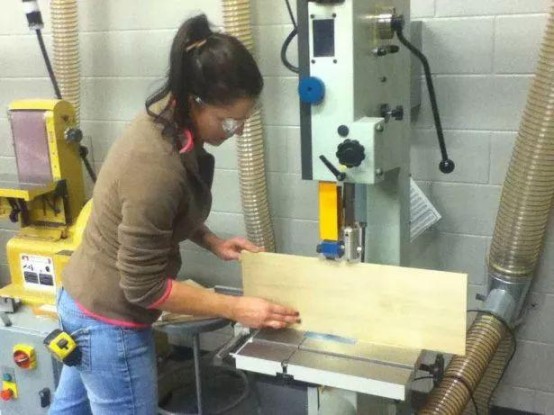
When not in use, saw blades should be stored either flat or suspended to prevent deformation. Stacking or stepping on blades is strictly prohibited. Proper storage also requires protection against moisture and corrosion to preserve blade integrity.
